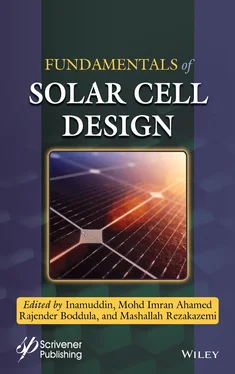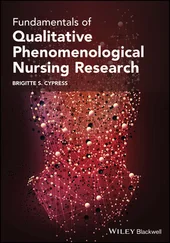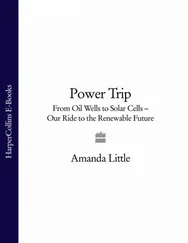91. Romain Cariou et al ., III–V-on-silicon solar cells reaching 33% photoconversion efficiency in two-terminal configuration. Nature Energy , 2018. https://doi.org/10.1038/s41560-018-0125-0.
92. Kunta Yoshikawa et al ., Silicon heterojunction solar cell with interdigitated back contacts for a photoconversion efficiency over 26%. Nature Energy , 2, 17032, 2017.
93. Hung-Ling Chen et al ., A 19.9%-efficient ultrathin solar cell based on a 205-nm-thick GaAs absorber and a silver nanostructured back mirror. Nature Energy , 2019. https://doi.org/10.1038/s41560-019-0434-y.
94. Sheng-Qing Zhu, Bin Bian, Yun-Feng Zhu, Jun Yang, Dan Zhang and Lang Feng, Enhancement in Power Conversion Efficiency of GaAs Solar Cells by Utilizing Gold Nanostar Film for Light-Trapping. Frontiers in Chemistry , 7, 137, 2019.
95. Emily D Kosten, Jackson H Atwater, James Parsons, Albert Polman and Harry, A Atwater, Highly efficient GaAs solar cells by limiting light emission angle. Light: Science & Applications , 2, e45, 2013.
96. Suk In Park et al ., GaAs droplet quantum dots with nanometer thin capping layer for plasmonic applications. Nanotechnology , 29, 205602, 2018.
97. Enrico Avancini et al ., Effects of Rubidium Fluoride and Potassium Fluoride Postdeposition Treatments on Cu(In,Ga)Se2 Thin Films and Solar Cell Performance. Chem. Mater. , 29, 9695–9704, 2017.
98. Veronica Bermudez, and Alejandro Perez-Rodriguez, Understanding the cell-to-module efficiency gap in Cu(In,Ga)(S,Se)2 photovoltaics scale-up. Nature Energy , 466:3, 466–475, 2018. https://doi.org/10.1038/s41560-019-0466-3.
99. W. K. Metzger et. al., Exceeding 20% efficiency with in situ group V doping in polycrystalline CdTe solar cells. Nature Energy , 2019. https://doi.org/10.1038/s41560-019-0446-7.
100. Yuan Zhao, Mathieu Boccard, Shi Liu, Jacob Becker, Xin-Hao Zhao, Calli M. Campbell, Ernesto Suarez, Maxwell B. Lassise, Zachary Holman and Yong-Hang Zhang, Monocrystalline CdTe solar cells with open-circuit voltage over 1V and effciency of 17%. Nature Energy , 1, 16067, 2016.
101. Chang Yan et al ., Cu2ZnSnS4 solar cells with over 10% power conversion efficiency enabled by heterojunction heat treatment. Nature Energy , 2018. https://doi.org/10.1038/s41560-018-0206-0.
102. Joshua Moskowitz, Rashad Sindi, and Chris D. Geddes, Plasmonic Electricity II: The Effect of Particle Size, Solvent Permittivity, Applied Voltage, and Temperature on Fluorophore-Induced Plasmonic Current. J. Phys. Chem. C , 124, 5780−5788, 2020.
103. Se-Woong Baek et al ., Efficient hybrid colloidal quantum dot/organic solar cells mediated by near-infrared sensitizing small molecules. Nature Energy , 4, 969–976, 2019.
104. Yiming Cao, Alexandros Stavrinadis, Tania Lasanta, David So and Gerasimos Konstantatos, The role of surface passivation for effcient and photostable PbS quantum dot solar cells. Nature Energy , 1:16035, 1–6, 2016.
105. Kevin A. Bush et al ., 23.6% efficient monolithic perovskite/silicon tandem solar cells with improved stability. Nature Energy , 2, 17009, 2017.
106. Vivian E. Ferry, Jeremy N. Munday, and Harry A. Atwater, Design Considerations for Plasmonic Photovoltaics. Adv. Mater. , 22, 4794–4808, 2010.
107. Aliaksandr Hubarevich, Mikita Marus, Weijun Fan, Aliaksandr Smirnov, Hong Wang, Highly Efficient Ultrathin Plasmonic Insulator-Metal-Insulator-Metal Solar Cell. Plasmonics , 13, 141–145, 2018.
108. Mark V. Khenkin et al ., Consensus statement for stability assessment and reporting for perovskite photovoltaics based on ISOS procedures. Nature Energy , 5, 35–49, 2020.
109. Jin-Hui Zhong et al ., Nonlinear plasmon-exciton coupling enhances sum-frequency generation from a hybrid metal/semiconductor nanostructure. Nature Communications , 11:1464, 2020. | https://doi.org/10.1038/s41467-020-15232-w.
110. F. Pelayo, Garcıa de Arquer, Agustın Mihi, Dominik Kufer, and Gerasimos Konstantatos, Photoelectric Energy Conversion of Plasmon-Generated Hot Carriers in Metal Insulator Semiconductor Structures. ACS Nano, 7:4, 3581–3588, 2013.
111. Renxing Lin et al ., Monolithic all-perovskite tandem solar cells with 24.8% efficiency exploiting comproportionation to suppress Sn(ii) oxidation in precursor ink. Nature Energy , 4, 864–873, 2019.
112. Jared S. Price et al ., High-concentration planar microtracking photovoltaic system exceeding 30% efficiency. Nature Energy , 2, 17113, 2017.
113. Michael Saliba, Wei Zhang, Victor M. Burlakov, Samuel D. Stranks, Yao Sun, James M. Ball, Michael B. Johnston, Alain Goriely, Ulrich Wiesner, Henry J. Snaith, Plasmonic‐Induced Photon Recycling in Metal Halide Perovskite Solar Cells, Advanced Functional Materials , 25(31), 5038–5046, 2015. https://doi.org/10.1002/adfm.201500669
114. Tokuhisa Kawawaki, Haibin Wang, Takaya Kubo, Koichiro Saito, Jotaro Nakazaki, Hiroshi Segawa, and Tetsu Tatsuma, Efficiency Enhancement of PbS Quantum Dot/ZnO Nanowire Bulk-Heterojunction Solar Cells by Plasmonic Silver Nanocubes, ACS Nano , 9, 4, 4165–4172, 2015. https://doi.org/10.1021/acsnano.5b00321
115. Janusz E. Jacak and Witold A. Jacak, Plasmonic Enhancement of Solar Cells Efficiency: Material Dependence in Semiconductor Metallic Surface Nano-Modification, 2018.
1 * Corresponding author: indrani.banerjee@cug.ac.in
Umesh Fegade
Bhusawal Arts Science and P. O. Nahata Commerce College, Bhusawal, Maharashtra, India
Email: umeshfegade@gmail.com
Abstract
The world is facing the several problems but the energy crisis is the major concern for scientist community and intellectual. Energy production using conventional resources produces high amount of greenhouse gases which increases the temperature of earth as a results the polar ice melts. From last few decades, the renewable energy sources are used for to reduce the use of conventional resource. The sunlight is the biggest available source of renewable and scientist is keep try to produce electricity with high efficiency. The tandem solar cell is the third generation of solar cell. The tandem solar cell has two, three, and four junction and efficiency reached upto 32.8%, 44.4%, and 46.0%, respectively. In the present paper, we review the paper of tandem solar including its subtypes organic tandem solar, inorganic tandem solar, and hybrid tandem solar cell.
Keywords:Conventional resources, greenhouse gases, renewable energy, tandem solar cell
| CO 2 |
Carbon dioxide |
| PV |
Photovoltaic |
| VOC |
Open-circuit voltage |
| FF |
Fill factor |
| OPV |
Organic photovoltaic |
| GO |
Graphene oxide |
| PEIE |
Polyethylenimine |
| ITO |
Indium tin oxide |
| PCE |
Power conversion efficiency |
| LBIC |
Light beam induced current |
| EQE |
External quantum efficiency |
| Cd |
Cadmium |
| S |
Sulfur |
| Ga |
Gallium |
| Ag |
Silver |
| P |
Phosphorus |
| Si |
Silicon |
| NIR |
Near infrared |
| ZnO |
Zinc oxide |
| In |
Indium |
| CIGS |
Copper indium gallium diselenide |
| MA |
Methylamonnium |
| CQD |
Colloidal quantum dot |
| DMD |
Dielectric-metal-dielectric |
| SnO 2 |
Tin(IV) oxide |
| PSC |
Perovskite solar cell |
| TSC |
Tandem solar cell |
| OTSC |
Organic tandem solar cell |
| ITSC |
Inorganic tandem solar cell |
| HTSC |
Hybrid tandem solar cell |
| PSEHTT:ICBA |
Poly[(4,40-bis(3-ethylhexyl)dithieno [3,2-b:0030-d]silole)-2,6-diyl-alt-(2,5-(3-(2-ethylhexyl) thiophen-2-yl)thiazolo[5,4-d]thiazole]: indene-C60 bisadduct |
| PSBTBT:PC70BM |
Poly[(4,40-bis(2-ethylhexyl)dithieno[3,2-b:20,30-d]silole)-2,6-diyl-alt-(2,1,3-benzothiadiazole)-4,7-diyl]:[6,6]-phenyl-C70 butyric acid methyl ester |
| JSC |
Short circuit current density |
| Au-doped SLGNRs |
Au-doped single layer graphene nanoribbons |
| OHJs |
Organic heterojunctions |
| CGLs |
Charge generation layers |
| HAT-CN |
1,4,5,8,9,12-hexaazatriphenylene-hexacarbonitrile |
| m-MTDATA |
4,4′,4″-tris(N-3-methylphenyl-N-phenylamino) triphenylamine |
| MPE |
Maximum Power efficiency |
| PEDOT:PSS |
Poly(3,4-ethylenedioxythiophene):poly(styrene sulfonate) |
| CFPTSC |
Colorful flexible polymer tandem solar cells |
| LBIC |
Light beam induced current |
| EQE |
External quantum efficiency |
| I-V |
Current-voltage |
| +H3N−C6H12−NH3+ |
Dicationic hexane-1,6-diammonium) |
| C3H7−NH3+ |
Monocationic n-propylammonium |
| CIGS |
Copper indium gallium diselenide |
| CH 3NH 3PbI 3 |
Methyl ammonium leads triiodide |
| CGS |
Copper gallium diselenide |
| FAPbX3 |
Formamidinium lead halide |
| ICO |
Cerium-doped indium oxide |
| RF |
Radio frequency |
| RT |
Room temperature |
| ST-PSC |
Semi-transparent perovskite solar cell |
| P/SHJ |
Perovskite/silicon-heterojunction |
| SJSC |
Single-junction solar cells |
| OCVP |
Open-circuit photo-voltage |
| SCPCD |
Short-circuit photo-current density |
| EL |
Electroluminescence |
| TPSC |
Tandem polymer solar cells |
| MCE |
Maximum current efficiency |
| EQE |
External quantum efficiency |
Читать дальше












